The Kona Process 134 DL comes with 134mm of rear-suspension travel, configured in a faux-bar, linkage-driven single-pivot setup. It’s balanced with 140mm forks up front.
Kona’s bikes aren’t always known for being the snappiest uphill, but their descending pedigree is second to none.
With an alloy frame and low-slung shape, I’d expect the Process 134 to follow a similar path.
Kona Process 134 DL frame and suspension
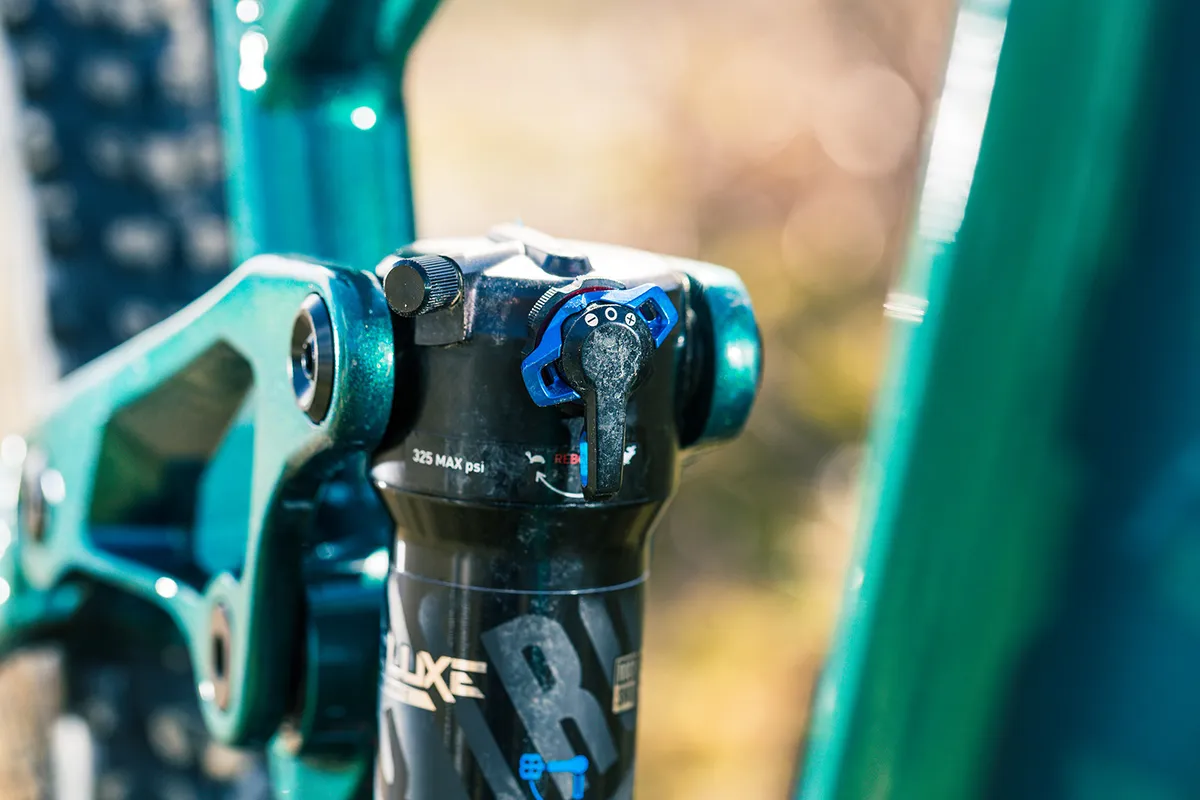
Kona’s 6061 butted aluminium is used in both the front and rear triangles, as well as in the link that pushes the vertically mounted, single-can shock.
The shock pushes into a brace that links the heavily kinked seat tube and curved down tube. Its compression and rebound levers and dials are located at the top, by the rocker link, making them accessible from the saddle.
The straight top tube has a long weld area with the down tube at their union near the head tube, while a brace joins the extended seat tube, ensuring strength isn’t lost thanks to the low standover.
Other than routing for the stealth dropper, cables and hoses are routed externally, making them easy to maintain and replace.
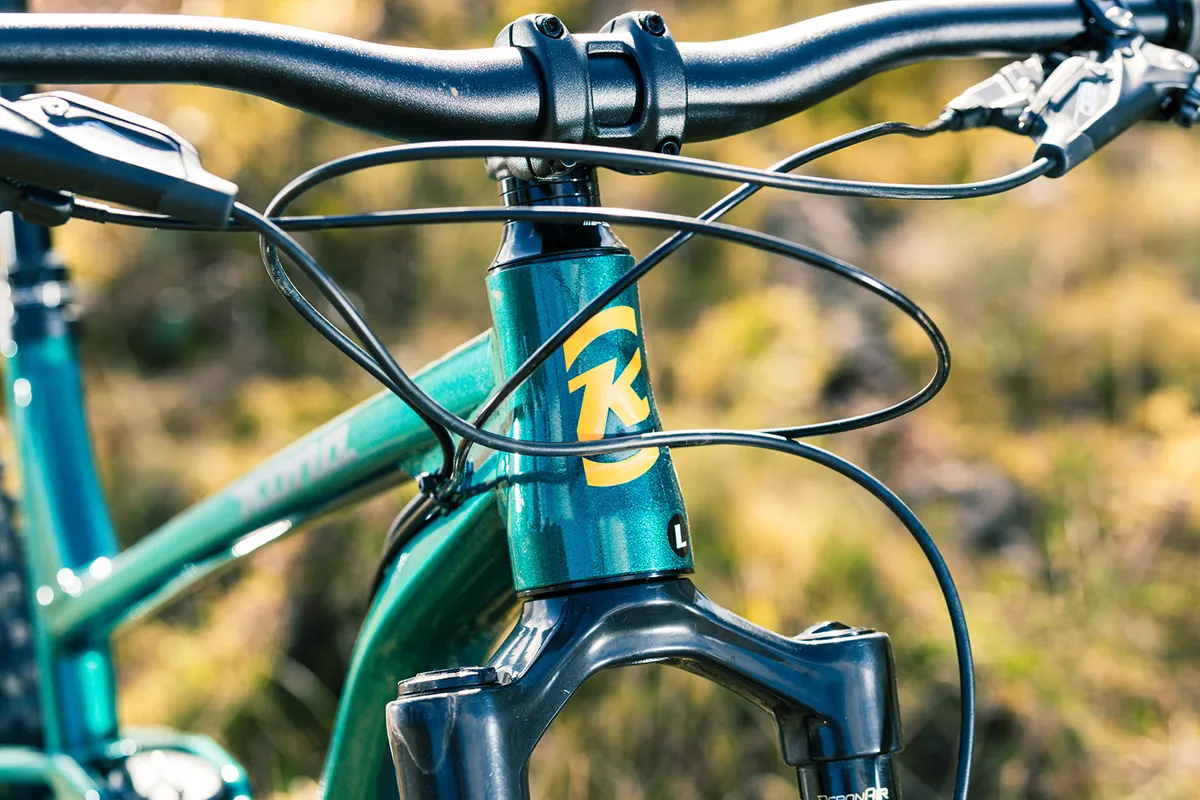
It’s indicative of a fairly simple build, with a neat integrated chainstay protector, and not much else in terms of frame features – not that this is necessarily a bad thing.
The suspension is termed ‘Beamer Independent Suspension’, and is a single-pivot linkage actuated ‘faux-bar’ system.
It means the front triangle and rear axle are linked directly with an uninterrupted chainstay, while there’s a pivot sat just above the rear axle on the seatstay.
This then drives a linkage, pushing the shock. This, Kona says, protects the shock from side loads, induced from the rear end, which can impact on shock friction levels and long-term durability.
Kona Process 134 DL geometry
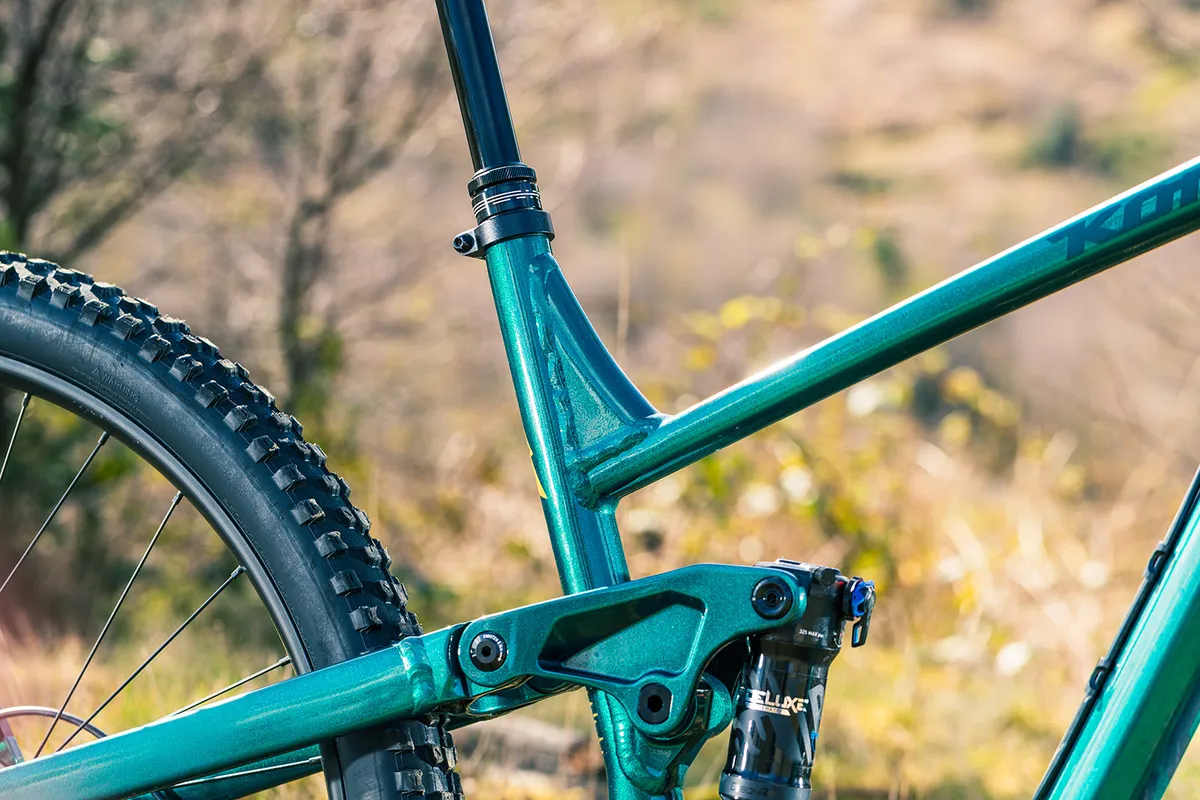
There’s nothing that jumps out when looking at the Process 134’s geometry chart, and this can be construed positively.
All the lengths and angles are on-par for a modern trail bike that should be able to handle the wide variation of trails such a bike is likely to be rallied around.
The head angle, at 65.7 degrees (measured), is fairly slack for a 134mm-travel bike. Kona lists the seat angle at 76.3 degrees on a size large, although I measured it at 76.1 degrees for my 71cm saddle height.
If you’re running the post higher, the effective seat angle will be slacker, and vice-versa, thanks to the kinked seat tube that doesn’t draw a straight line from bottom bracket to saddle clamp.
| | S | M | L | XL |
|---|---|---|---|---|
| Seat angle (degrees) | 76.5 | 76.5 | 76.3 | 76.2 |
| Head angle (degrees) | 66 | 66 | 66 | 66 |
| Chainstay (mm) | 427 | 427 | 427 | 427 |
| Seat tube (mm) | 385 | 410 | 450 | 485 |
| Top tube (mm) | 569 | 596 | 625 | 664 |
| Head tube (mm) | 93 | 98 | 109 | 120 |
| Fork offset (mm) | 51 | 51 | 51 | 51 |
| Bottom bracket drop (mm) | 33 | 33 | 33 | 33 |
| Bottom bracket height (mm) | 342 | 342 | 342 | 342 |
| Wheelbase (mm) | 1,159 | 1,186 | 1,216 | 1,255 |
| Standover (mm) | 715 | 725 | 725 | 725 |
| Stack (mm) | 601 | 605 | 615 | 625 |
| Reach (mm) | 425 | 450 | 475 | 510 |
Kona Process 134 DL specifications
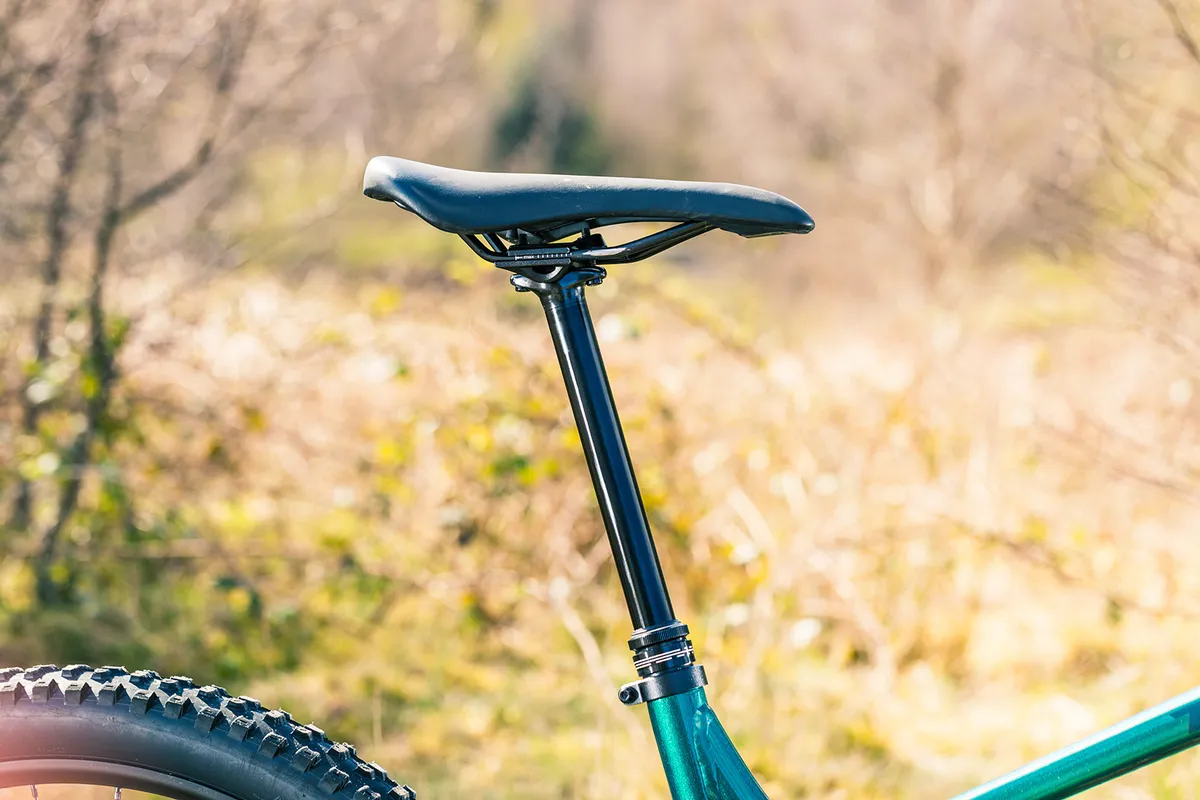
Kona has gone to RockShox for the suspension, with a 140mm Pike Select RC bolted into the head tube, and a Deluxe Ultimate shock sat between frame and rocker. This has three main damping positions, from open to closed, as well as a three-position tuning dial for the open setting.
Clearly, much of Kona’s budget has gone on the suspension, because the drivetrain comes from SRAM’s lower-end NX range, with a GX rear derailleur keeping up appearances.
This adds weight, and means the cassette is an 11-50 rather than (potentially up to) a 10-52t. SRAM’s G2 RS brakes clamp onto 200/180mm rotors.
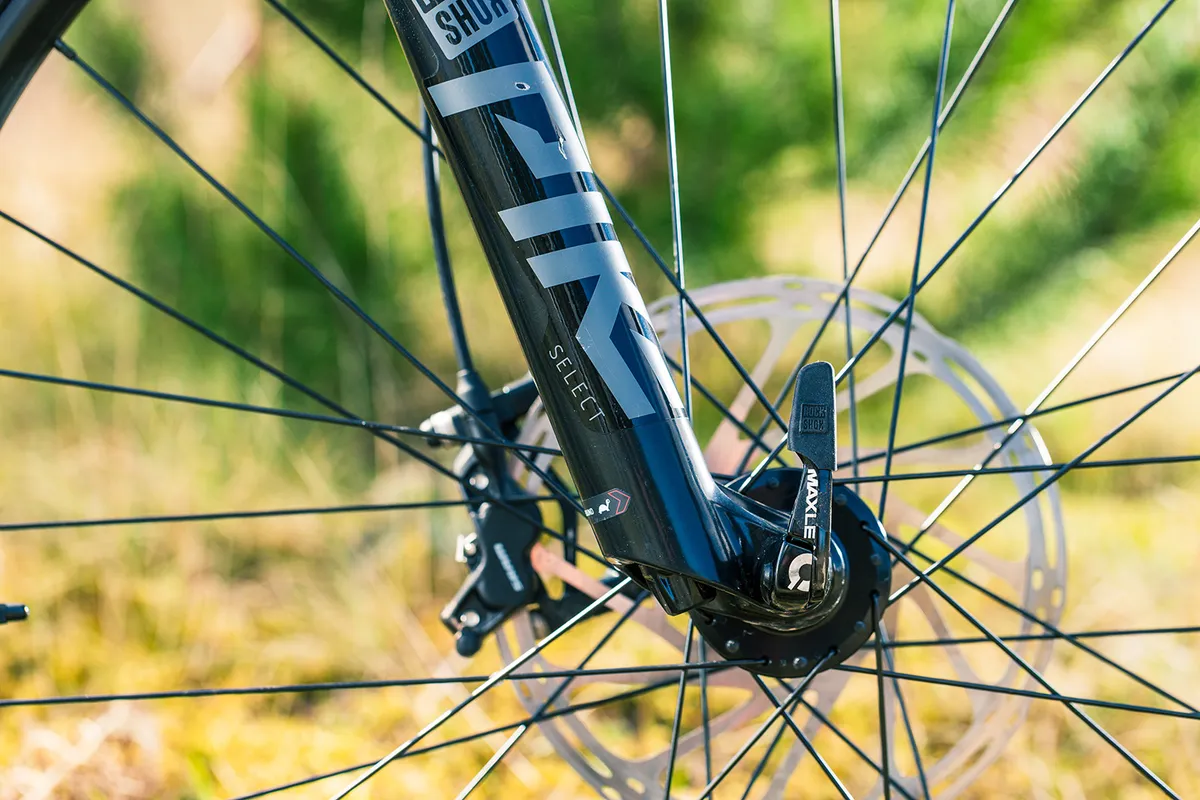
There’s a sturdy pair of wheels between the dropouts, with Formula hubs and WTB KOM Team i30 rims, shod in Maxxis Minion DHF front and Dissector rear tyres – both in lighter-weight EXO casings, but with the 3C triple-compound MaxxTerra rubber and 2.5in (f) and 2.4in (r) Wide Trail widths.
Kona gets a massive pat on the back for speccing the hubs with Torque Caps, the larger-diameter hub end caps that mate with the associated hub cap recess on the RockShox fork.
While I’m sceptical of the real-world benefit of the Torque Cap system, fitting non-Torque Cap hubs into a RockShox fork can be really frustrating.
Kona’s own-brand kit largely finishes the build.
Kona Process 134 DL ride impressions
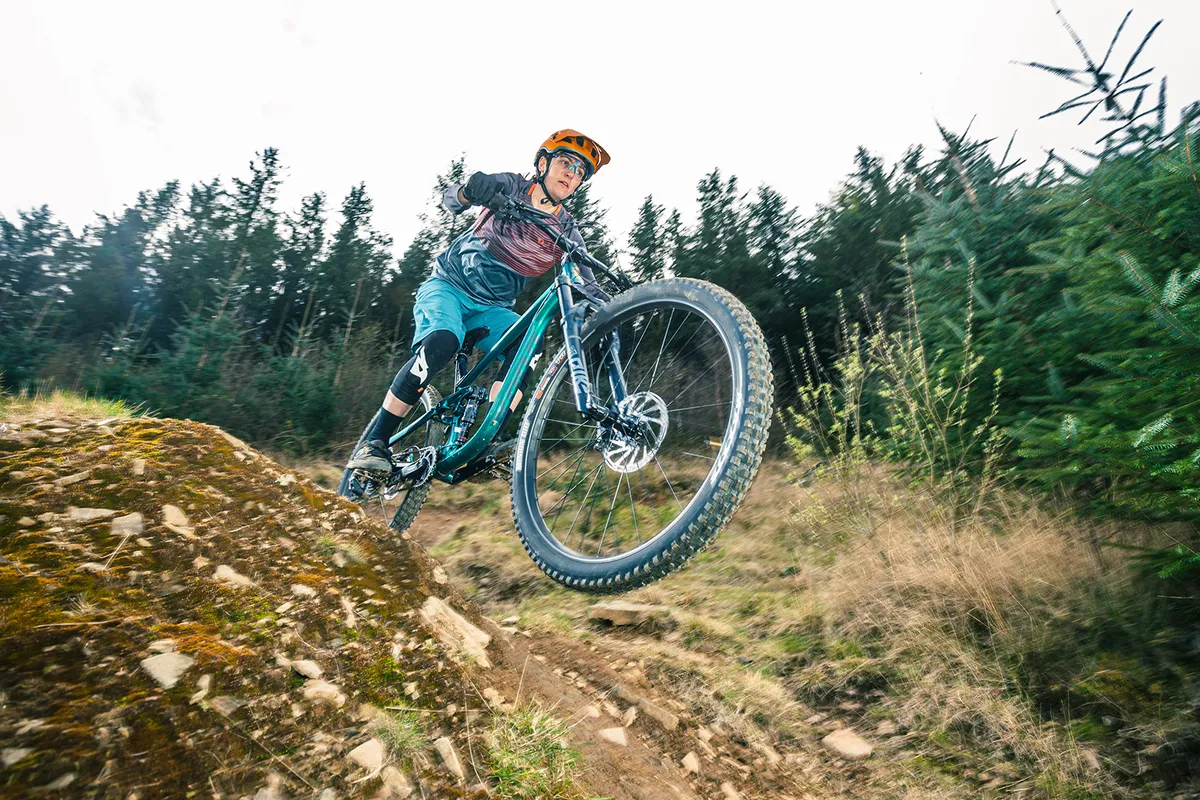
This bike was reviewed as part of our 2022 Bike of the Year test. It was pitted, in the trail category, against seven other bikes, with travel ranging from 120 to 140mm at the rear, and priced from £3,299 to £3,999.99.
The bikes were ridden all over the UK, from long, steep tracks in South Wales to our regular testing loops in the Forest of Dean, fast rocky tracks in the Tweed Valley and the fresh-cut loam and rocky outcrops of the Cairngorm National Park.
Bikes were tested back to back, with short repeated loops ensuring differences were noticed easily. An extensive programme of workshop weighing, measuring and general poking about made sure that every little detail was explored.
Kona Process 134 DL climbing performance
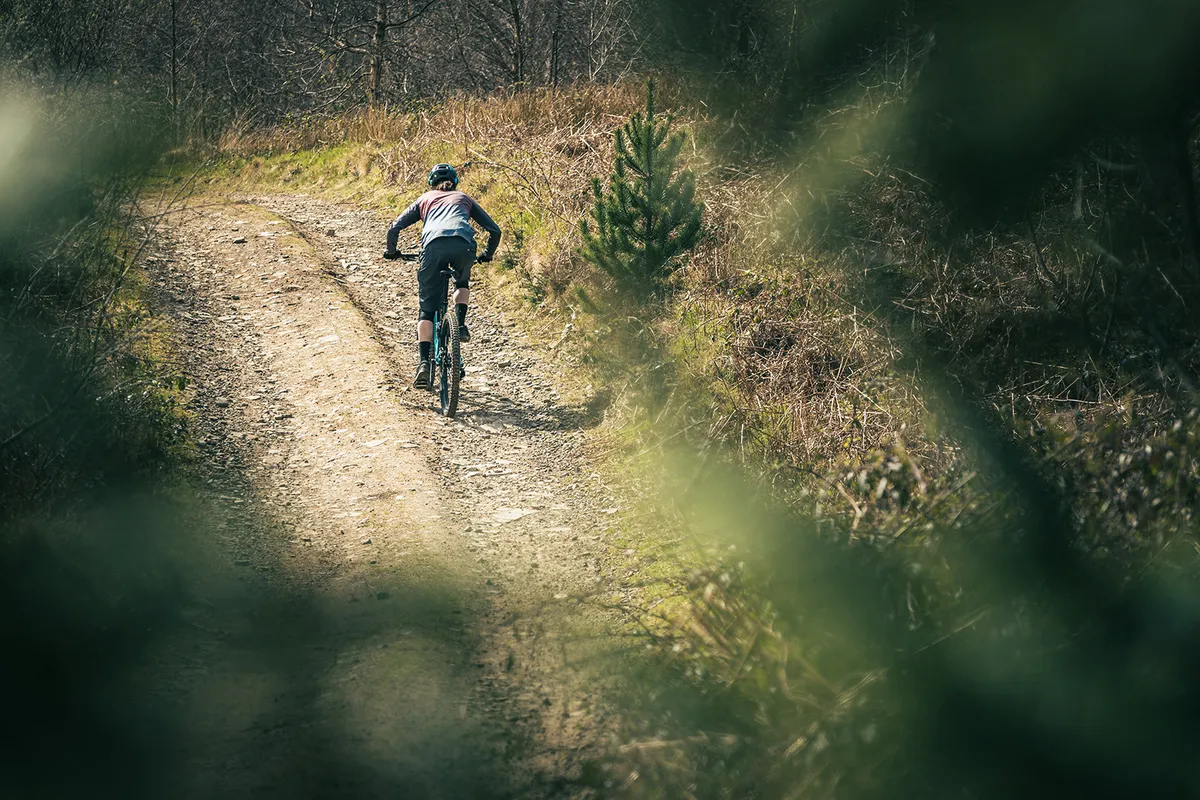
Kona isn’t famed for its bikes’ climbing performance, and the Process 134 certainly won’t set the world alight when the trail ascends.
The 76.1-degree seat angle doesn’t feel particularly steep, especially once the suspension has settled into its sag, leaving you feeling perched behind the bottom bracket more than you might like.
The Deluxe Ultimate shock is beautifully supple, but the suspension linkage doesn’t massively separate pedal inputs from the shock, so anything other than super-smooth pedalling results in pedal bob. As such, the compression switch on the shock was flicked frequently on positive gradients.
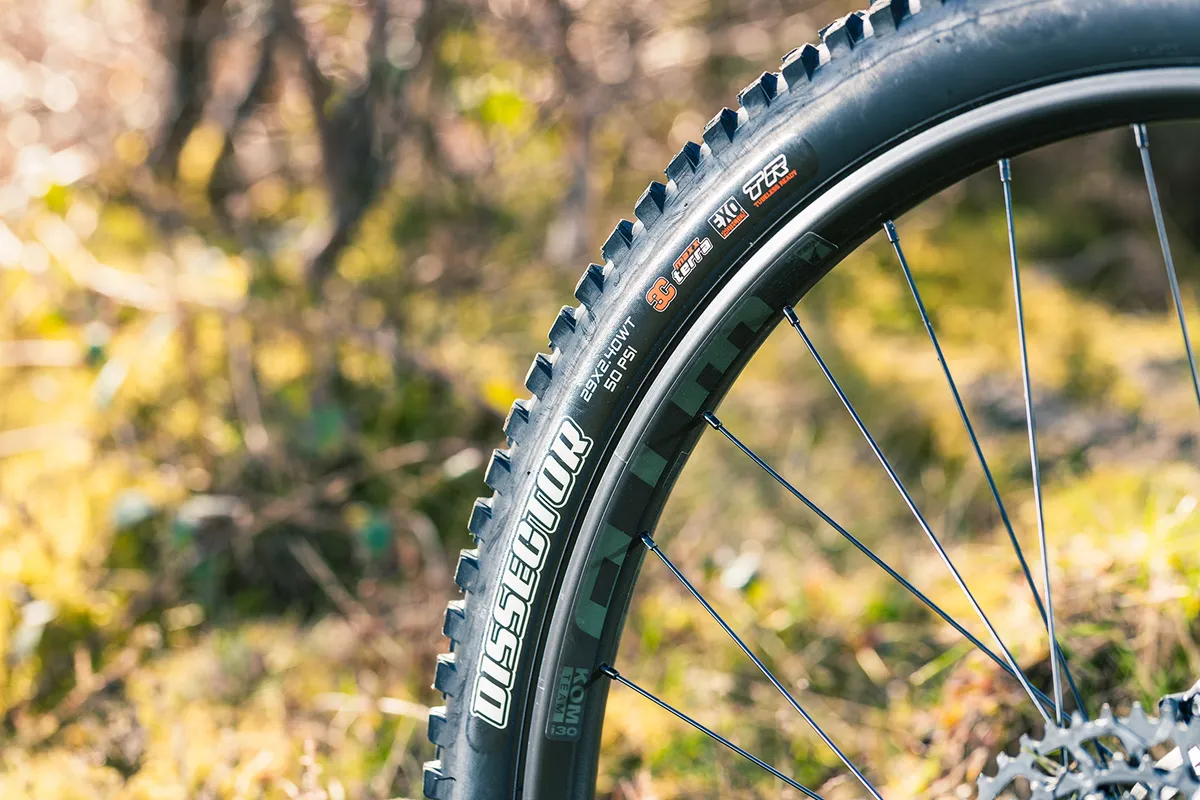
The tyres are par for the course on a trail bike – they aren’t as fast-rolling as some, but certainly could be draggier. The 15kg weight doesn’t give the bike a sprightly feel.
This being said, the suppleness of the rear end does help on looser climbs, where rear-wheel traction is good. When it gets really steep, the 32:50 bottom gear is usually enough, but I wouldn’t complain if a 30t chainring were fitted.
Space over the bike is good, thanks to the long-ish front end. It’s easy to manipulate body weight front to back to ensure rear-wheel traction and front-wheel accuracy are on point.
Kona Process 134 DL descending performance
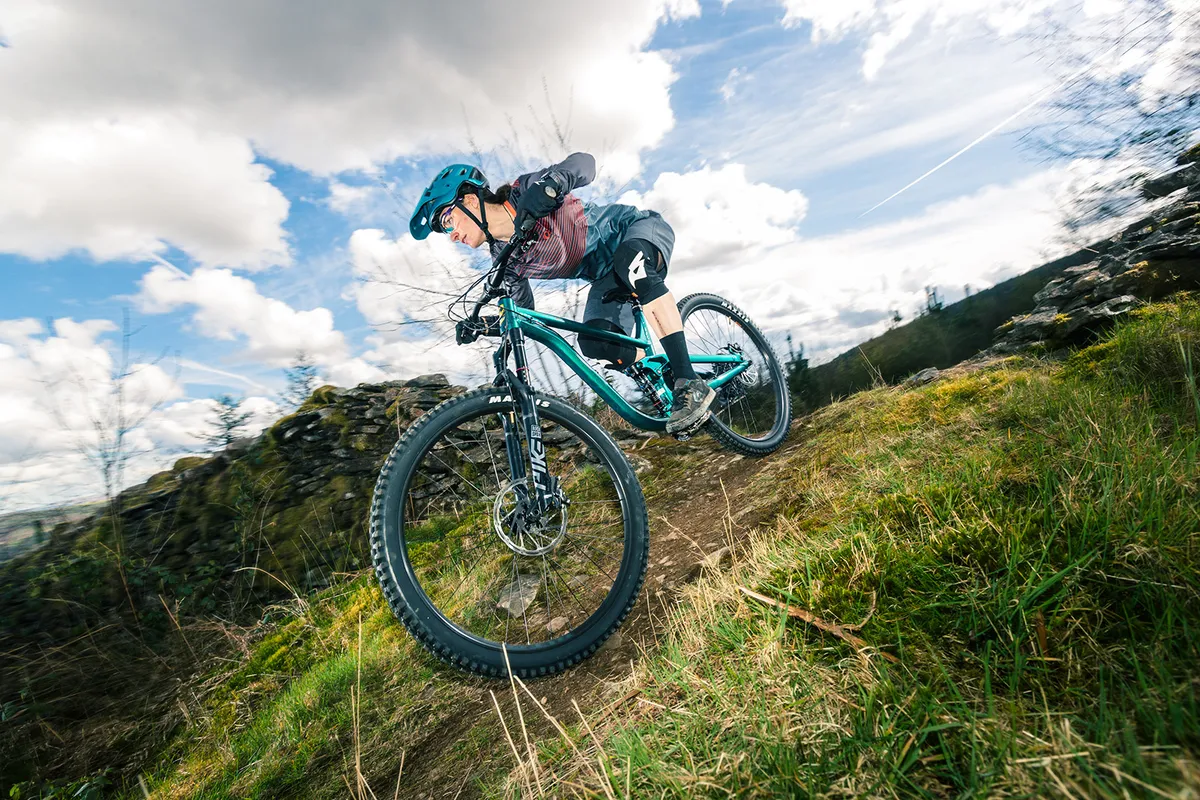
The Process 134 might not have blown me away on the climbs, but it’s a much happier story on the descents.
The 134mm of suspension is served up smoothly, with excellent ground-hugging capabilities allowing you to stay off the brakes longer and maintain speed over increasingly rough terrain.
It’s most at home on faster, steeper and rougher tracks, where gravity is your primary means of acceleration, rather than committed pedalling.
The rear suspension’s support comes at the latter end of the mid-stroke, so while it might not be the most efficient to pump over dips and rises, needing quite a bit of bodily input to generate speed, it does seem to resist too much pedal kickback until you get to those bigger impacts.
Even when you hit the bigger drops or bury the suspension into a square edge, the late progression is controlled, so ankles don’t feel beaten up, and kickback doesn’t feel as harsh as it might on a peppier-pedalling bike.
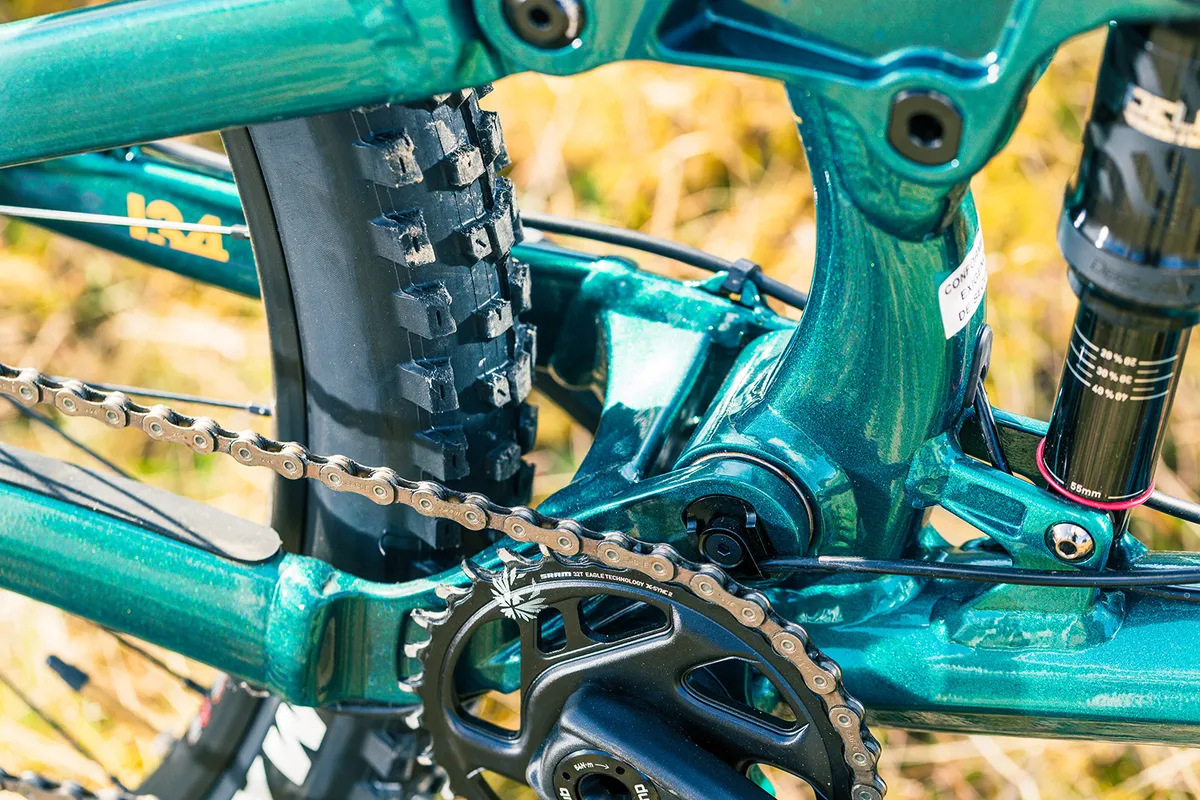
So smooth is the rear end that it totally outshines the front of the bike. As I found when testing the Canyon Spectral 125, the Pike Select RC fork doesn’t seem as smooth as more expensive or burlier RockShox forks – or the budget Fox equivalents. The 35mm-diameter bar and stem combo likely doesn’t help, either, in keeping the front end comfy.
Geometrically, Kona has done a good job. The bottom bracket sits fairly low under the axles, and with the suspension sat into its travel, the cranks are low to the ground in a corner, giving tons of stability. The 427mm chainstays are short, too, helping you hoik the bike round tighter turns.
Sling it into a heavily loaded berm, or hold on tight through a jumbled mess of rocks and you might detect a hint of front-end flex, but I rarely encountered any issues arising from this. Heavier or harder riders might, though, find it reduces pin-point accuracy a touch.

The head angle, at around 66 degrees, is fairly standard for a trail bike, but add in a decent front-end length and there’s high-speed stability – only boosted by that smooth suspension.
Where the bike doesn’t quite shine is on flatter, more mellow trails and at trail centres, where it’s muted reaction to pedal inputs and marshmallow suspension rob urgency.
You can adjust the shock’s open mode with three compression settings, though the bike as a whole tended to feel better fully open. If you were going to spend the day at a trail centre, adjusting the shock to a slightly firmer compression tune in its open mode would be a good idea.
In terms of kit, the Process 134 doesn’t quite deliver for the money – other than the rear shock.

The wheels are a touch weighty and the tyres really should come with a more stout carcass.
The NX/GX Eagle drivetrain works well, but is outshone by similarly priced Shimano counterparts, while the G2 RS brakes lack punch and power. That’s really the only thing compromising descending capabilities (assuming you don’t puncture the EXO casing tyres).
The 200mm drop on the dropper (on my large test bike) is welcome, though.
How does the Kona Process 134 DL compare to the Vitus Escarpe 29 CRX and Nukeproof Reactor 290 Alloy Pro?
Within Trail Bike of the Year, the Kona Process 134 is most comparable to the Vitus Escarpe 29 CRX and Nukeproof Reactor 290 Alloy Pro.
Much like the Nukeproof, the 134’s rear end is incredibly smooth, while also being composed on bigger hits. Both suffer on smoother, flatter tracks and on climbs, but the Nukeproof remains a touch more active under braking.
The Vitus’ value for money is impressive, and overall its kit is decent, though I’d take the Lyrik from the Reactor over both the Pike and the 36.
The Vitus is only marginally more compromised on the descents than the Process 134 and Reactor, but does climb better than both, making it better suited to riders who find climbs a chore they’d rather get over and done with.
Kona Process 134 DL bottom line

The Kona Process 134 is best suited to fast, rough and steep tracks, with its smooth rear suspension and low-slung shape delivering plenty of traction, composure and excellent handling.
The no-nonsense frame should be easy to work on at home, and while the kit isn’t going to blow you away, other than the brakes and perhaps the tyres, it’s all solid stuff.
Riders looking to spend long days in the hills, or who like a bike that’s faster up those hills, might need to look elsewhere, because it’s heavy and a bit mushy under power, but if you’re happy spinning to the top before hammering back down, the Process 134 DL is worth a look.
Trail Bike of the Year 2022 | How we tested
We expect a lot of the modern trail bike, so testing to find this year’s Trail Bike of the Year not only had to be thorough, but incredibly varied, too.
This meant spending one day sitting in the saddle for hours on end ticking off miles of singletrack, and the next blasting down bike park runs, giving the bikes a proper hammering in the process.
Of course, there was a decent amount of everything in the middle, including scrabbling up steep, forested climbs before sliding back down and, quite simply, just playing about in the woods.
Most of our testing took place around the Forest of Dean or in south Wales, with a cheeky trip to Scotland thrown in for good measure.
To come out on top, we wanted a bike that could climb with close to the efficiency of the best cross-country mountain bikes, but still manage to descend with some of the composure you’re likely to find from an enduro bike.
If the bike felt sluggish and lethargic on an all-day epic, or skittish and nervous when tackling a technical descent, then it simply wouldn’t make the cut as this year’s best trail bike.
With such a competitive selection of bikes on test, deciding on the winner happened late in the day. In fact, it wasn’t until we were riding on the final photo shoot that we settled on the 2022 winner, which just goes to show how tough the competition has been.
Our Trail Bike of the Year 2022 contenders are:
- Canyon Spectral 125 CF7
- Cube Stereo 120 HPC TM 29
- Kona Process 134 DL 29
- Nukeproof Reactor 290 Alloy Pro
- Specialized Stumpjumper Comp
- Trek Top Fuel 8
- Vitus Escarpe 29 CRX
- YT Izzo Core 2
Thanks to…
Thanks to our sponsors MET Helmets, Bluegrass Protection and BikePark Wales for their support in making Bike of the Year happen.
Product
| Brand | kona |
| Price | 4299.00 EUR,3899.00 GBP,4099.00 USD |
| Weight | 15.0000, KILOGRAM (L) - without pedals |
Features
| Fork | RockShox Pike Select, 140mm travel |
| br_stem | Kona XC/BC 35, 35mm |
| br_chain | SRAM SX Eagle |
| br_frame | Kona 6061 butted aluminium, 134mm travel |
| Tyres | Maxxis Minion DHF EXO 29x2.5WT f, Maxxis Dissector EXO 29x2.4WT |
| br_brakes | SRAM G2 RS, 200/180mm rotors |
| br_cranks | SRAM NX Eagle, 32t |
| br_saddle | WTB Volt |
| br_wheels | Formula hubs, WTM KOM Team i30 TCS rims |
| br_headset | FSA Orbit |
| br_shifter | SRAM NX Eagle |
| br_cassette | SRAM NX Eagle, 11-50t |
| br_seatpost | TranzX +RAD 200mm |
| br_gripsTape | Kona Key Grip |
| br_handlebar | Kona XC/BC 35, 780mm |
| br_rearShock | RockShox Deluxe Ultimate |
| br_bottomBracket | SRAM DUB |
| br_availableSizes | S, M, L, XL |
| br_rearDerailleur | SRAM GX Eagle |
